Tourism and Indigenous culture go hand in hand in many countries around the world. Steve Jones investigates how different companies here in Australia are investing in Aboriginal culture’s rich heritage, and how indigenous people are getting involved with showing their homeland and traditions to tourists.
CHECK into many hotels in Fiji or New Zealand, holiday in France, Vietnam or China — and many other destinations in between — national cultural identity is everywhere. From traditional welcomes by staff to the design of the rooms, from menus to decorations and wall hangings, there are often unmistakeable flavours of the county and its heritage. Local culture is integral to the visitor experience.
Not so Australia. Uluru and Kakadu aside, reference to Australia’s rich and fascinating Indigenous history is often confined to a plaque on a wall, at best. And it is a cultural void that AccorHotels wants to fill.
Two years after joining the hotel group as national Indigenous programs manager, Marc Bennie is on a mission to see Indigenous history, culture and tradition permeate AccorHotels’ network of more than 200 Australian hotels.
It is, as Bennie acknowledges, a long term vision. But it is one already taking shape. Furthermore, it is another example of how Aboriginal and Torres Strait Islander heritage is starting to play a more prominent role in Australia’s suite of tourism products.
“When you visit some countries, take Fiji or New Zealand, the culture is in front of you the moment you walk through the airport and into the hotel. There is a level of culture you want and expect,” Bennie said.
“Yet in Australia it is very limited. You have to go to Ayers Rock or Kakadu to get that cultural experience. We want to buck the trend by encouraging our Indigenous employees to share their stories and create a cultural tourism experience within our properties. It is something we are passionate about.”
Among the first of AccorHotels’ hotels to embrace 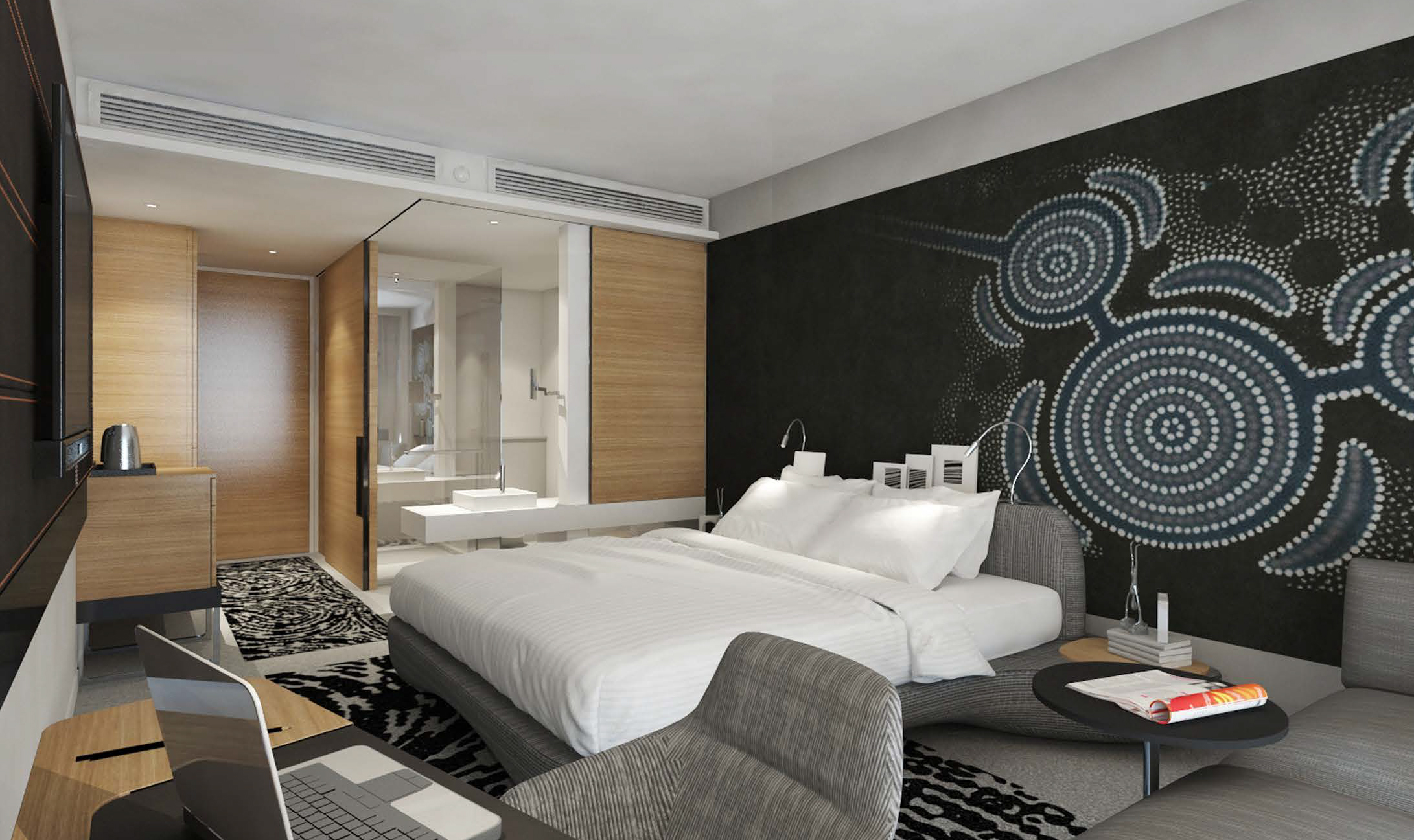 the initiative has been the five-star Sofitel Gold Coast. Indigenous art adorns the walls and conference rooms, menus contain native ingredients, while in the lobby, guests can try lemon myrtle-infused water as Aboriginal employees explain how the plant has been used for centuries by Indigenous communities for its nourishing and medicinal qualities.
the initiative has been the five-star Sofitel Gold Coast. Indigenous art adorns the walls and conference rooms, menus contain native ingredients, while in the lobby, guests can try lemon myrtle-infused water as Aboriginal employees explain how the plant has been used for centuries by Indigenous communities for its nourishing and medicinal qualities.
“Our goal is to bring cultural tourism to life in places where it is unexpected,” Bennie said. “We don’t want hotel managers saying ‘I’m a CBD hotel so this isn’t important’. It is.”
Behind employment and training, this cultural tourism initiative is the third pillar of AccorHotels’ Indigenous program.
The hotel operator’s Indigenous engagement strategy dates back to 2001, but it was in 2015 with the launch of the Federal Government’s Employment Parity Initiative (EPI) — and the subsequent creation of AccorHotels’ Indigenous programs division which Bennie heads — that the hotel group accelerated its employment drive.
The purpose of the EPI is to encourage large companies to have a workforce reflective of the size of the Indigenous population, currently 3%.
“We started at around 3% which equated to 300 Indigenous employees. But given the focus of the program, the full time resourcing of a team and buy-in from the business, we have been able to take that up to 5%, to more than 550 Indigenous staff,” Bennie said.

While 80% of AccorHotels’ Indigenous recruitment is for entry-level, lower skilled work — job seekers who don’t have degrees and are looking for their first job — Bennie stressed it was looking to step up efforts to place existing staff into more senior roles.
Those efforts culminated in March with the appointment of Kristy Stanton as AccorHotels’ first Indigenous general manager, taking charge of op
erations at Ibis Budget Sydney Olympic Park.
Bennie said AccorHotels will use the breakthrough appointment to “encourage and facilitate the next three, five, 10 Indigenous GMs in an ambitious time frame”.
Stanton herself, who spent seven years rising through the ranks at AccorHotels, told travelBulletin that while proud of her achievement, her greatest satisfaction was seeing the impact it has had on fellow Indigenous Australians.
Her progress, which included two years on AccorHotels’ executive leadership program, has given a voice to Indigenous staff and generated a confidence previously absent, Stanton explained.
Rather than shying away from communicating their career goals, many now feel empowered to articulate their aspirations and feel more optimistic that those aspirations can be realised.
“There has been a lack of confidence partly because, for many people, they are the first in their family to have these sorts of opportunities,” Stanton said. “I was the first member of my family to graduate with a university degree and if no one in your family has gone down this path before there is a tendency to think ‘is this something I am capable of?’.
“But people have seen me go forward and seen that it’s possible to be Indigenous and become a GM. There is no reason why it can’t happen. I have been taken aback by the impact it has had on other Indigenous employees and that has made me particularly happy and proud.”
Voyages Indigenous Tourism Australia, under the ownership of the Indigenous Land Corporation (ILC), is another company that has invested in the training and employment of Aborigines and Torres Strait Islanders.
Soon after ILC acquired the flagship Ayers Rock Resort in 2011, Voyages established the National 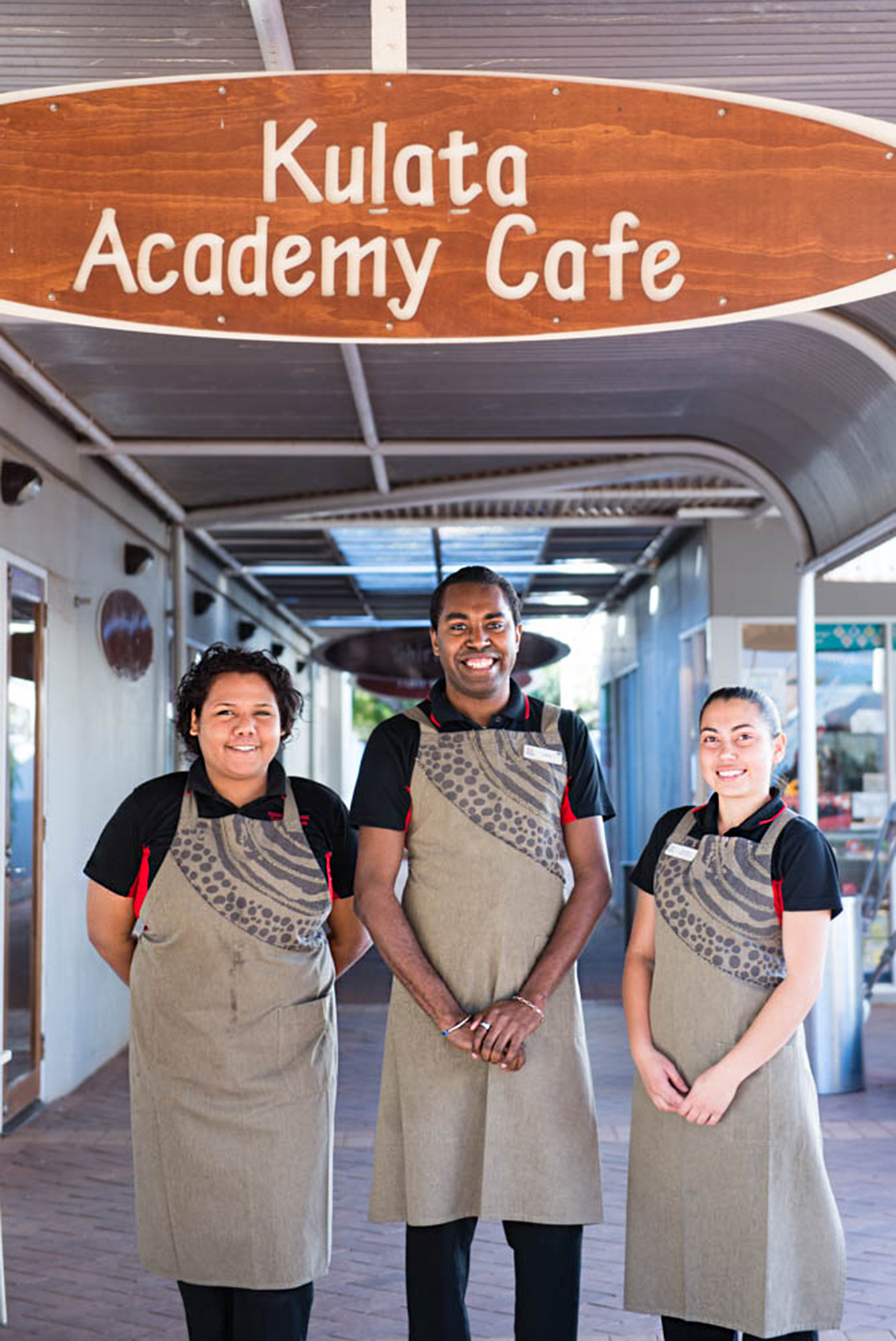 Indigenous Training Academy as part of its parent company’s vision to put not only Indigenous culture at the centre of the property, but its people too.
Indigenous Training Academy as part of its parent company’s vision to put not only Indigenous culture at the centre of the property, but its people too.
Until ILC’s involvement, Ayers Rock Resort employed scant few Indigenous people. Now, with the academy taking in 100 residential trainees each year — and all guaranteed a job on completion of the year-long course — the resort now employs more than 300, representing 37% of the workforce. The aim is to increase that to 50% by 2018. In addition to tourism and hospitality, the breadth of the training has recently been expanded to include retail and horticulture.
Typically, trainees arrive on the course with very little work experience and very few qualifications, meaning the scheme is initially aimed at developing skills and establishing people in full time positions.
But Voyages chief executive Andrew Williams said the training does not stop there. “Around 50 of our Indigenous employees are in supervisor and manager level positions and that is a big focus,” he said. “They are not confined to entry level positions and we have had quite a number progress fairly quickly through the ranks.
“Interestingly, feedback from our GMs is that employees who come through the academy are typically higher skilled and more productive than those directly recruited from outside, so the program is supporting not only individual career progression but the quality of service and product we are offering.”
Williams continued: “Recruitment is critical so we have a one-week program to make sure those we are enrolling understand what they are in for and have the motivation and aptitude to complete the course. We have a completion rate of 70% which has steadily improved and we are quite pleased with that. It compares favourably to any other industry-based training program.”
In addition to guaranteeing jobs at Ayers Rock Resort, Voyages works with partners, AccorHotels among them, to find work for those who want or need to move back closer to home.
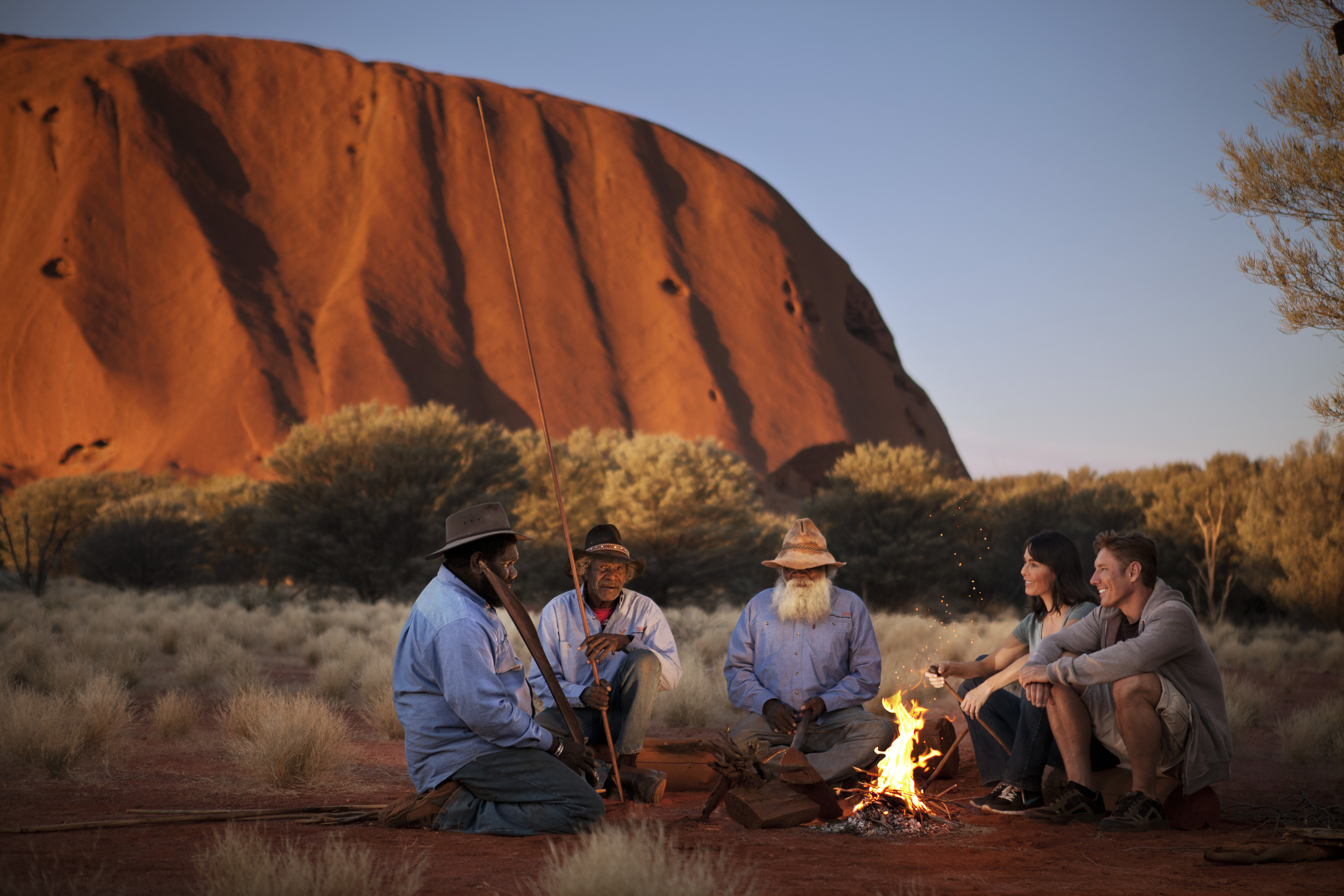
“Voyages is one of the best hospitality training grounds in Australia for Indigenous candidates,” AccorHotels’ Marc Bennie said. “We’ll take as many as possible. Our relationship with Voyages is a strong and positive one.”
But what of Indigenous product itself? What demand is there among domestic and international markets for cultural tourism?
According to Tourism Research Australia, around 16% of international tourists undertook some form of Aboriginal activity in 2016, up from 14% the previous year. Interest levels rise in markets likes the US and Europe, Germany in particular, with Tourism Australia chief executive John O’Sullivan insisting it will continue to market and support Indigenous tourism operators through its major marketing activity and via its Indigenous “champions”, a collection of 57 “export ready” businesses, some of whom attend international trade show to spread the word. All are Indigenous owned and operated businesses, with a further 23 close to reaching export ready status, he said.
Apart from delivering quality experiences in their own right, O’Sullivan said the broad range of product helps dispel the myth to the international trade that Indigenous experiences can only be found in remote areas.
“That’s just not the case,” he said. “One of our champions has walking tours of Sydney’s Royal Botanical Gardens while another, Sand Dune Adventures, is based in Port Stephens. Of course there are amazing Indigenous experiences at locations like Uluru but there are plenty in the CBD and metro areas.”
O’Sullivan described Indigenous tourism as a unique selling point for the nation, and a “distinguishing feature” of one of Tourism Australia’s core marketing premises; people.
“Indigenous culture has featured in the creative in our coastal and aquatic and Restaurant Australia campaigns and we produced an Indigenous film in 2015 that has been viewed 40 million times internationally,” he said. “We are continuing to evolve the brand story of Australia and we will make stories somewhat more prominent as we know the product pipeline is starting to back up.”
Yet according to Alex De Waal, chief executive of Tourism Tropical North QLD, Australia has not marketed or portrayed Indigenous product effectively enough.
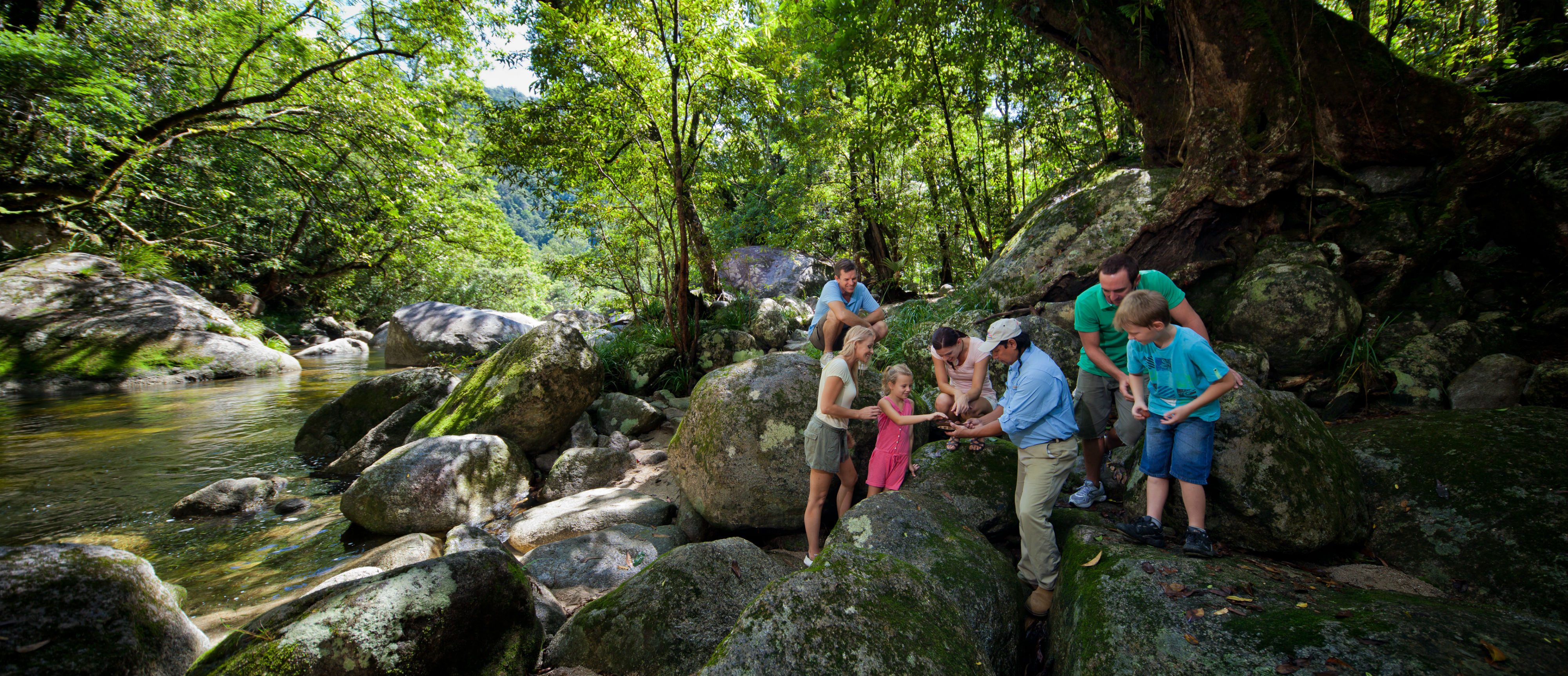
China, for example, is nonplussed at the promotion of the “world’s oldest culture” because they have so much culture of their own, he told travelBulletin. What they seek are unique experiences where they “engage with the natural environment”.
Under a new brand and tagline to be launched at Australian Tourism Exchange — Timeless Experiences: Sharing our Reef and Rainforest Stories — TTNQ will aim to unearth what De Waal believes is “huge demand for Indigenous experiences that has not yet been realised”.
“I do not believe Indigenous tourism has been portrayed or marketed in a manner that makes it attractive and compelling to international markets so the reality is yes, current demand is relatively small,” he said. “People want to touch and feel, to be engaged and immersed in the history and what it all means. This desire for interactive interpretation is a global trend.”
This taps into TTNQ’s new drive to promote Indigenous tourism, said De Waal, who acknowledged the region has a critical mass of Indigenous tourism operators and a high level of Indigenous populations “that we have not been capitalising on”.
“The Reef and Rainforest are two powerhouse natural attributes and have taken the tourism limelight for many years. With Timeless Experiences we felt we could demonstrate a third dimension,” he said.
Among the proponents of TTNQ’s new strategy was Andrew Simpson, a 30-year veteran of Indigenous tourism who in March swapped consultancy work in Mossman, Queensland, to take the role of chief executive of Lirrwi Yolngu Tourism Aboriginal Corporation in remote East Arnhem Land.
Lirrwi Tourism emerged from special administration last year with Simpson now charged with driving the business forward. International marketing will form a central pillar, he said, while product is likely to be rejigged to make it more appealing.
Simpson said the health of Indigenous owned and operated businesses, and Indigenous tourism  generally, has come a long way since he arrived at Jabiru in Kakadu National Park in 1989 to become functions manager at the Gagadju Crocodile Hotel. What he found left a deep and lasting impression that shaped his career in the sector.
generally, has come a long way since he arrived at Jabiru in Kakadu National Park in 1989 to become functions manager at the Gagadju Crocodile Hotel. What he found left a deep and lasting impression that shaped his career in the sector.
“I was a Melbourne boy who came straight out of the city into the NT and discovered thousands of wonderful Aboriginal people,” he recalled. “The Gagadju people owned the properties in Kakadu but weren’t employed there. Some of the elders were even begging outside the hotels for beer money. That had a huge impression on me. Ever since then I set out to try to make a difference.”
Much has improved — “the shift in the last 10 years has been fantastic”; Simpson said — but challenges remain. One such challenge surrounds cultural obligations whereby money generated by Indigenous-owned businesses is expected to flow back to extended families, or where vehicles must be shared. All can be damaging to the viability of Indigenous enterprises if not carefully managed.
“Pressures are put on these Indigenous businesses at every angle. That is one of the most significant things I have witnessed over the years,” Simpson said.
Operating in Arnhem Land also has unique challenges for Lirrwi Tourism. Apart from requirements not to over-commercialise the region and avoid upsetting cultural sensitivities, its remoteness adds significant cost and time to a visitor experience. To make it potentially more palatable to overseas visitors, Simpson said he is contemplating the introduction of day tours from Nhulunbuy. While still providing the interaction with Yolngu traditional owners and a “cultural immersion” it avoids the high cost and lengthy travel.
“The market is there and the interest is there. It’s now a matter of all working hard to get our products polished, reliable and consistent,” said Simpson, who added he had been overwhelmed at the level of support of Indigenous tourism from government and non-government agencies.
There is little doubt that the number of Indigenous operators, and the level of expertise and professionalism, has improved immeasurably in recent years, while employment opportunities have also vastly improved. But it’s clear there is more to do.
“Indigenous Australia has only had a voice for 50 years or so, so we are on a journey to increase the prominence and desire of Indigenous tourism,” AccorHotels’ Bennie said. “At the same time, Tourism Australia and the state bodies are working desperately with local tourism operators to get them to a place where they are comfortable doing mass tourism — and that is an interesting debate in itself.
“The way I see it is that AccorHotels needs to be a key driver in that. We need to make it accessible and that is why we want to bring cultural tourism into our properties.”
Burnes’ view on selling indigenous product
Helloworld executive director Cinzia Burnes pulled no punches when comparing the state of indigenous tourism today to that of the turn of the millennia.
“To be honest, 15 years ago you would be very hesitant to utilise any so-called aboriginal tour operator because the few that were available were very unreliable,” she said. “You would never know if the tours would run, whether they would turn up, or whether the company would be there next month.
“Has that improved? Oh absolutely.”
Today, Helloworld operates Territory Discoveries, which is sold exclusively in Australia, sells indigenous product through Sunlover Holidays and Qantas Holidays and works with many international wholesalers through its inbound division.
But while the product has improved beyond recognition, demand domestically remains “very limited”, Burnes said.
“It’s extraordinary that a lot of Australians who have been travelling overseas for years have never been to the Red Centre or Kakadu. There is probably less awareness of aboriginal tourism and accommodation products within the domestic market than internationally,” Burnes said.
She listed Voyages Indigenous Tourism products as among the best sellers, along with tours operated by Kakadu Tourism, formerly Gagudju Dreaming, Kakadu Cultural Tours and Davidson’s Arnhemland Safaris.
But she questioned whether culture was the main driver.
“They are popular because they offer great experiences. I’m not suggesting they choose these products because they are aboriginal products,” Burnes said.
She estimated that international demand through its inbound operations is “at least double” that of its domestic business, with visitors from France and Germany in particular seeking indigenous product once they arrive in Australia.
Demand from China meanwhile is “non-existent”, she said.
“I know the NT has tried to attract the Chinese market but I don’t think it’s the type of product the current Chinese market is interested in. But I can see this changing over the next few years as the market matures and people make return trips and they travel further afield.”
Running NT Indigenous Tours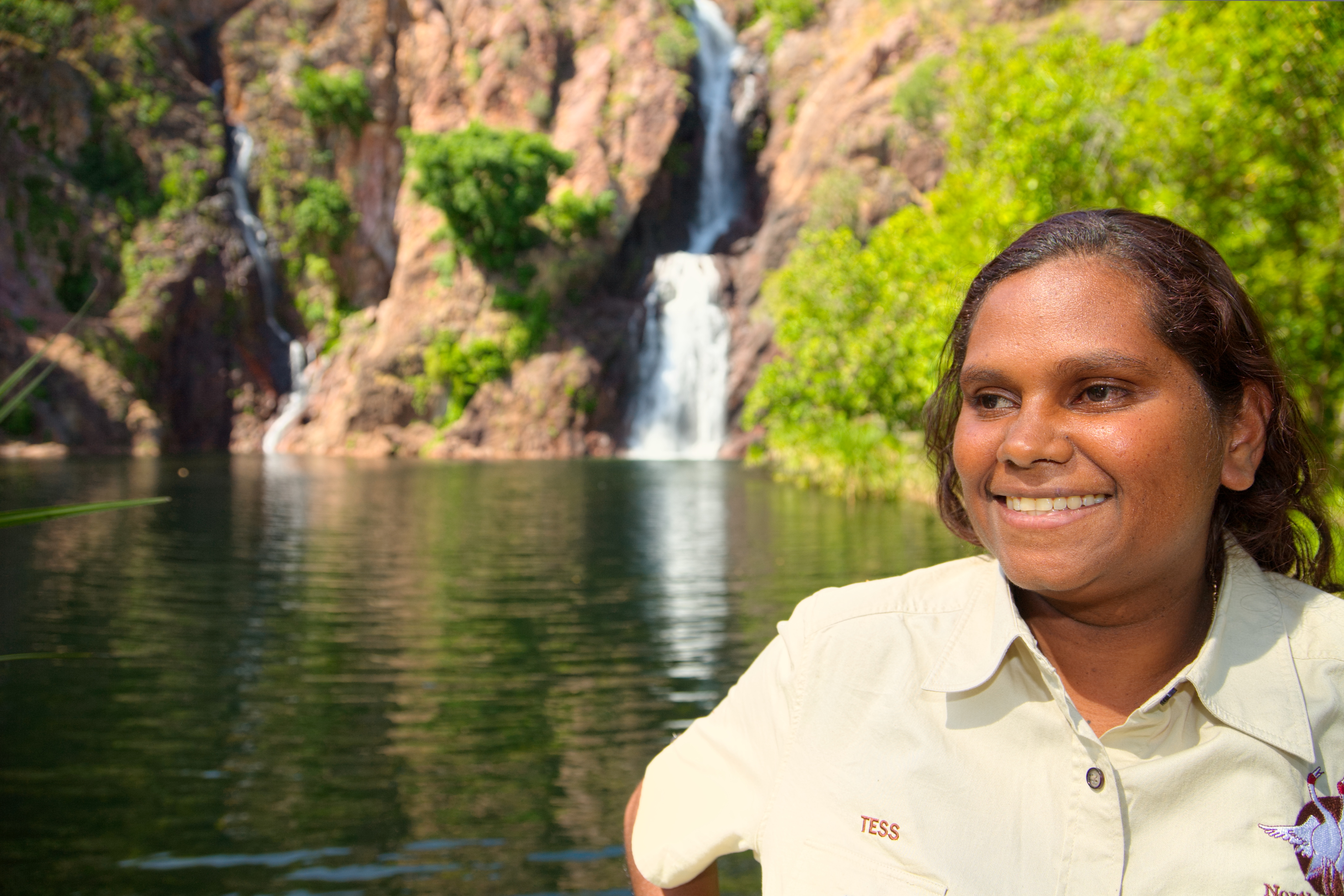
“There is a lot of work and the hours are long,” reflected Tess Atie, owner and tour guide of Northern Territory Indigenous Tours. “But there is a lot of satisfaction when people ‘get’ what I am talking about.”
Tess launched her company in 2009 after spying a gap in the market for a high demand product with little supply.
After navigating “far more red tape than I ever imagined”, she now has an established business operating indigenous tours to Litchfield and Kakadu National Parks. But it’s not been an easy ride, and continues to throw up significant challenges. It’s a journey that many indigenous operators are likely to relate to.
Tess was a participant in Tourism Australia’s champions program but left after believing it was “another government program where white people tell indigenous people how they should operate”. Nevertheless, she feels it has potential and could be beneficial “with a bit of rejigging and more management involvement from indigenous people themselves”.
Then on the touring side there is the wet season to contend with.
“There is significant demand and it is growing steadily but filling wet season tours remains a challenge,” Tess said. “Attracting tourists to the Top End in our wonderful wet season is something that government tourism and national park agencies should be putting a lot more effort into.”
Challenges around seasonality are not the only issues Tess grapples with. Finding guides is also a problem.
“My husband and I do just about everything, including lead the tours. I do have a few indigenous family members whom I employ from time to time but it’s been very hard, even for me, to find indigenous people who are suitably qualified with a ‘hire’-endorsed drivers licence, are reliable and comfortable talking about their culture and lives to groups of strange white people day after day.
“I have a conundrum in that I don’t have enough bookings to employ someone full-time and don’t feelcomfortable pushing for more bookings and then possibly having no indigenous guides available.”
Nevertheless, the perils of operating a small, indigenous family run business are offset by the wonder expressed by many of her guests. “Around half my guests are Australians, and the other half from overseas who have little knowledge or experience of Aboriginal culture. Most of them, however, do have a lot of interest and this makes it all worthwhile.
“What give me the most joy is when kids come on a tour. They are always so interested in the hands-on stuff. Making string, tasting green ants and digging up the little yam we call meyamakimim.”


